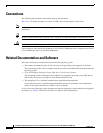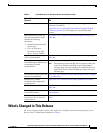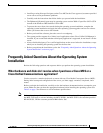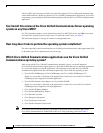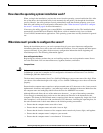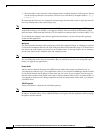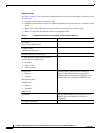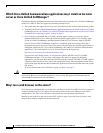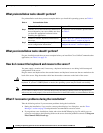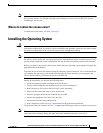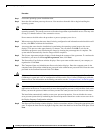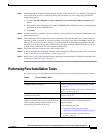
12
Installing the Operating System on the Cisco Unified Communications Server, Versions 2000.4.3 and 2000.4.3a
OL-10221-02
Frequently Asked Questions About the Operating System Installation
Configuration Data
See Table 3 on page 12 for configuration information that is required for installing the operating system
on your server.
• Complete all fields unless otherwise noted.
• Gather this information for each Cisco Unified Communications Server that you are installing in the
cluster.
• Make copies of this table and record your entries for each server in a separate table.
• Before you begin the installation, obtain the configuration data.
Table 3 Configuration Data for Cisco Unified Communications Servers
Configuration Data Your Entry
User name
Name of your Organization
Computer name
Administrator Password
Current date, time, and time zone
TCP/IP properties (required if you choose
custom network configuration)
• IP address
• Subnet mask
• Default gateway
DNS servers
• Primary
• Alternate
DNS domain suffix
WINS servers
• Primary
• Secondary
LMHosts file
You must have a name resolution method in
place, such as Domain Name System (DNS),
Windows Internet Name Server (WINS), or local
naming that uses a configured LMHOSTS file.
Workgroup During the operating system installation, Cisco
requires that you configure the server in a
workgroup.
NT domain (optional)



